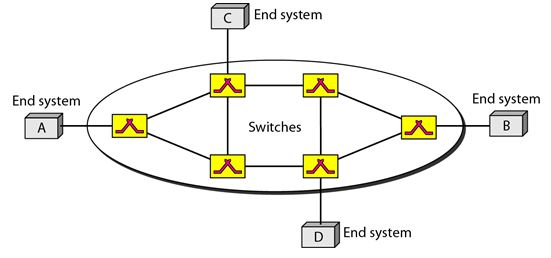
Virtual Circuit Network: Characteristics, Addressing, Efficiency & Delay
In the world of modern networking, Virtual Circuit Network (VCN) have emerged as a versatile solution that combines the best of both worlds – the predictability of circuit-switched networks and the efficiency of packet-switched networks. In this article, we will delve into the concept of Virtual Circuit Networks, explore their unique characteristics as a cross between circuit-switched and packet-switched networks, and understand the addressing used. Additionally, we will discuss the efficiency and delay aspects of such switching.
Understanding Virtual Circuit Networks:
A Virtual Circuit Network is a communication paradigm that establishes a logical connection between two endpoints before data transmission occurs. This logical connection, known as a “virtual circuit,” mimics the characteristics of a dedicated physical circuit, but it is not an actual physical connection like in circuit-switched networks. Instead, it is a temporary path set up within a packet-switched network for the duration of a session.
Characteristics of Virtual Circuit Networks:
Connection-Oriented: Virtual Circuit Networks are connection-oriented, meaning they require a setup phase before data transmission. During this setup phase, a path is established and reserved for data transfer, ensuring a predictable and consistent route for the data packets.
Packet-Switched Infrastructure: VCNs utilize packet-switched infrastructure, such as Frame Relay and Asynchronous Transfer Mode (ATM), to establish virtual circuits. This allows for efficient use of network resources and better scalability.
Predictable Routing: Similar to circuit-switched networks, VCNs offer predictable routing since the path is predetermined during the setup phase. This predictability results in lower latency and a more stable network performance.
Addressing in Virtual Circuit Networks:
In Virtual Circuit Networks, addressing involves two components:
Virtual Circuit Identifier (VCI): The VCI is a numeric value that uniquely identifies each virtual circuit within the network. It helps routers and switches direct data packets along the established path for a specific session.
Network Layer Addressing: Along with the VCI, network layer addressing, such as IP addresses, is used to identify the source and destination of data packets. The network layer addressing ensures that packets reach the correct endpoints within the virtual circuit.
Efficiency and Delay in Virtual Circuit Switching:
Efficiency: Virtual Circuit Networks offer higher efficiency compared to traditional circuit-switched networks. This is because VCNs use packet-switched technology, allowing multiple virtual circuits to share the same physical network resources simultaneously. As a result, the network capacity is utilized more efficiently, leading to better resource utilization.
Delay: The setup phase in Virtual Circuit Networks introduces a slight delay before data transmission can begin. This delay is known as “call setup delay” or “connection establishment delay.” However, once the virtual circuit is established, the data transmission experiences low delay and predictable latency. This is because the path is predetermined, and data packets follow a known route without the need for repeated route calculations, as seen in pure packet-switched networks.
Summary:
Virtual Circuit Networks strike a balance between the predictability of circuit-switched networks and the efficiency of packet-switched networks. By establishing temporary logical connections, VCNs ensure predictable routing and low latency while optimizing resource utilization through packet-switched infrastructure. The combination of Virtual Circuit Identifiers (VCIs) and network layer addressing allows for efficient data packet routing within the virtual circuit. Although there is a slight delay during the connection setup, the overall efficiency and reduced delay in data transmission make Virtual Circuit Networks a robust and versatile solution for modern communication needs.